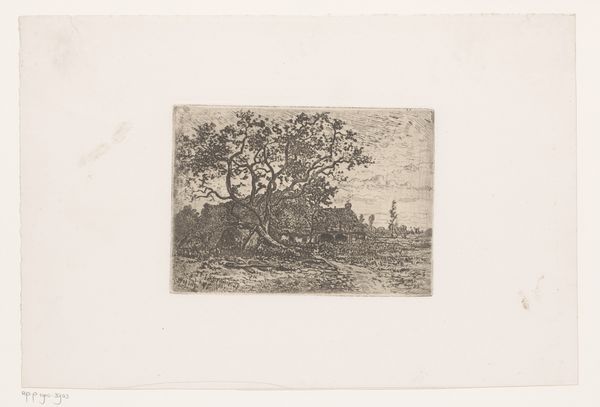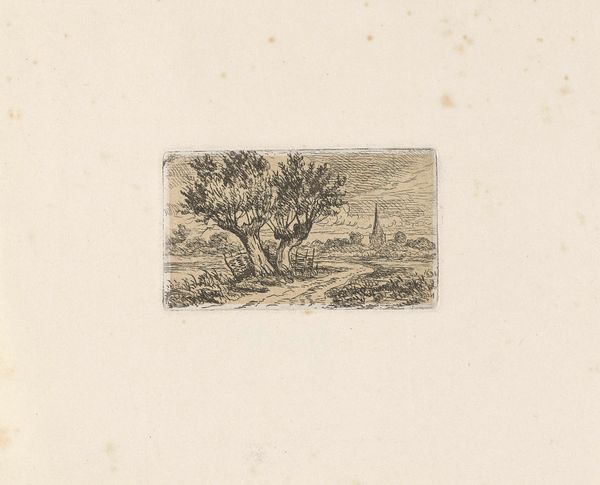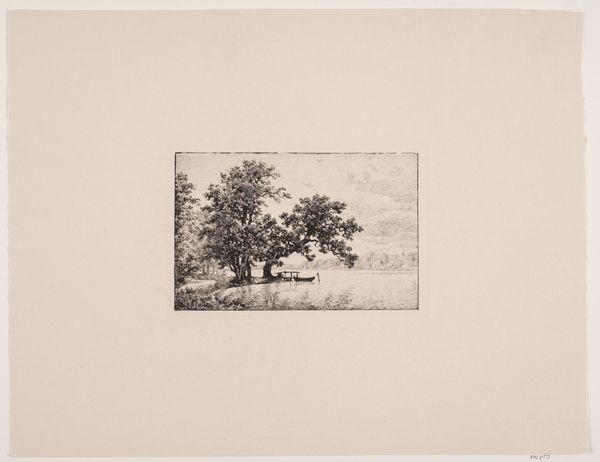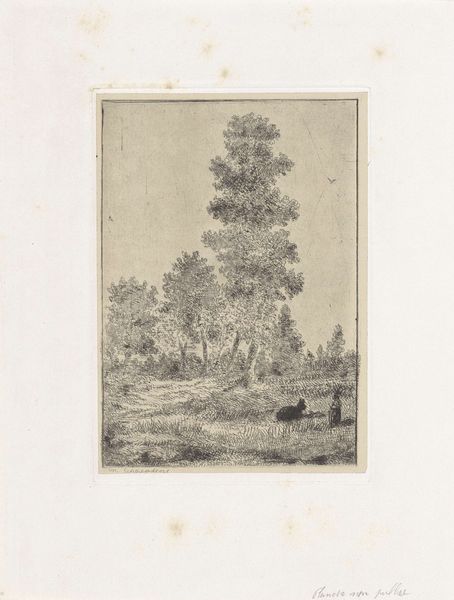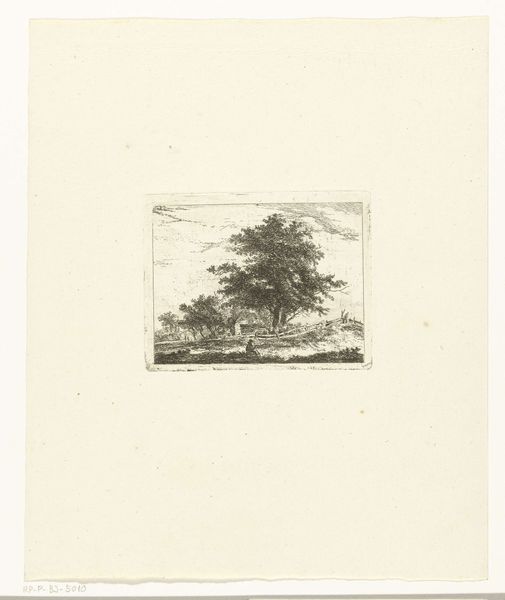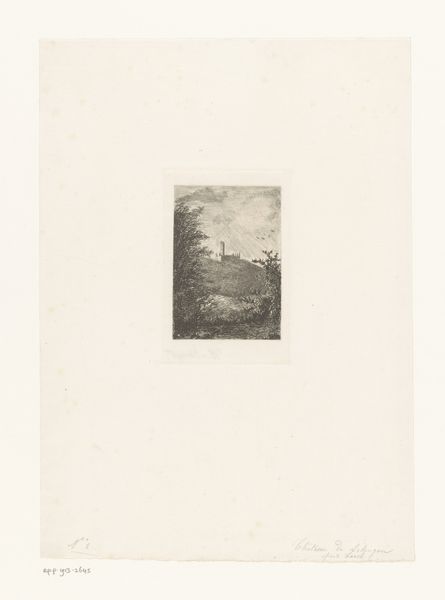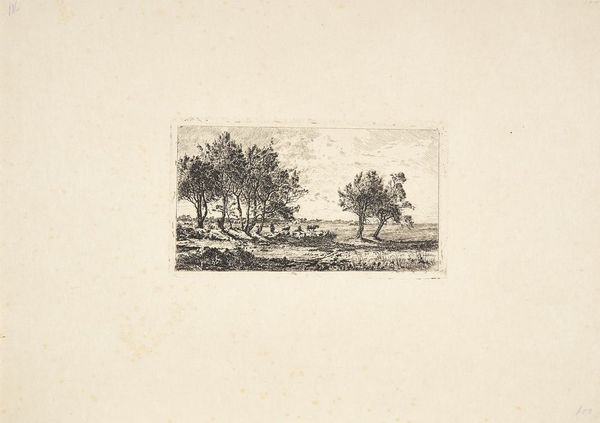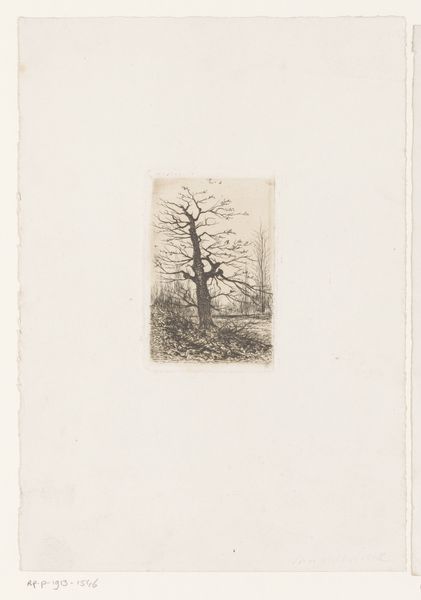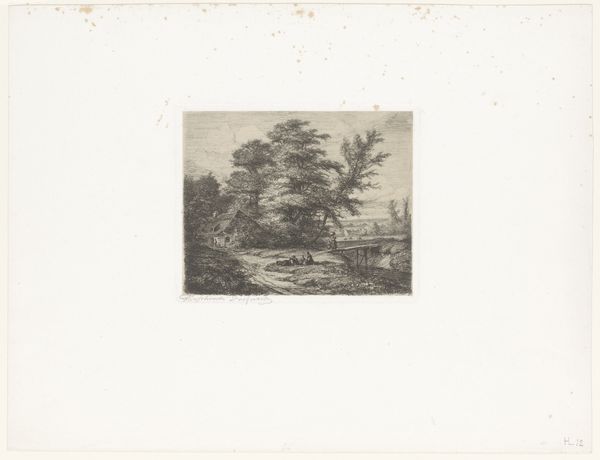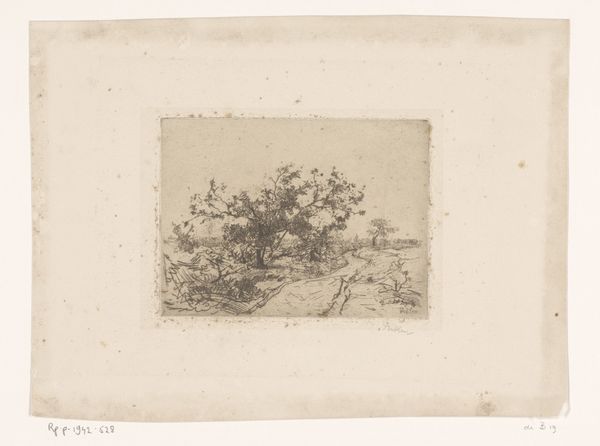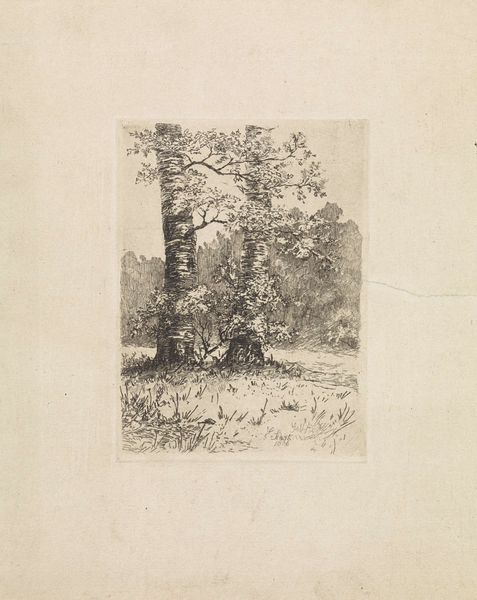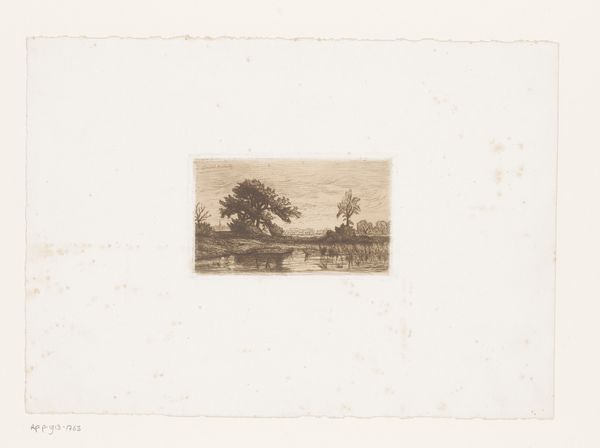
drawing, print, etching, pencil
#
pencil drawn
#
tree
#
drawing
# print
#
etching
#
pencil sketch
#
landscape
#
white palette
#
pencil
#
sketchbook drawing
#
realism
Dimensions: height 138 mm, width 96 mm
Copyright: Rijks Museum: Open Domain
Curator: Immediately striking. This piece feels hushed, almost reverent. The soft grayscale palette contributes to a dreamlike, meditative quality. Editor: This is “Landschap met hut onder bomen” by Arnoud Schaepkens, dating from 1831 to 1904. It's an etching, using both pencil and what looks to me to be etching. This intimate scene presents a landscape dominated by trees and what seems to be a small hut nestled underneath them. In the foreground, we see figures in a boat, all rendered with exquisite detail. Curator: It speaks volumes about human connection to the landscape. I am thinking about ecocriticism; the subtle commentary about our place in the natural world. How do we exist in it, extract from it? The people in the boat feel dwarfed by the trees, implying the quiet grandeur of nature that makes one really sit up. It's deeply, subtly political. Editor: Interesting. For me, my eyes are drawn more towards Schaepkens’ method. It’s like a marriage between craft and art: this attention to both pencil work and the print making that brings this to our sight. How does the landscape change by turning it from an experience into commodity that can be widely owned? This affects our understanding of landscape painting at that time! Curator: That is a wonderful point, looking at modes of material reproduction. But still, what stands out is this pervasive feeling of being enmeshed with nature. Consider landscape paintings of the time; do the people hold as much space, in terms of importance? Here we get that same sensation that contemporary writing on climate and nature provides, so as we look at our moment right now we feel it's still an essential narrative of power and representation. Editor: I understand the historical commentary within the painting as well, but looking at the balance between method and form gives it nuance. Here we see someone making commentary just by way of creation. As much as humans see nature, we also need to transform it so other humans can own the expression, in ways more powerful than we may know. Curator: Indeed. An evocative dialogue between artistic intent, production and also socio-political commentary of nature! Editor: A really successful merging of art and method in its commentary on that relationship.
Comments
No comments
Be the first to comment and join the conversation on the ultimate creative platform.
